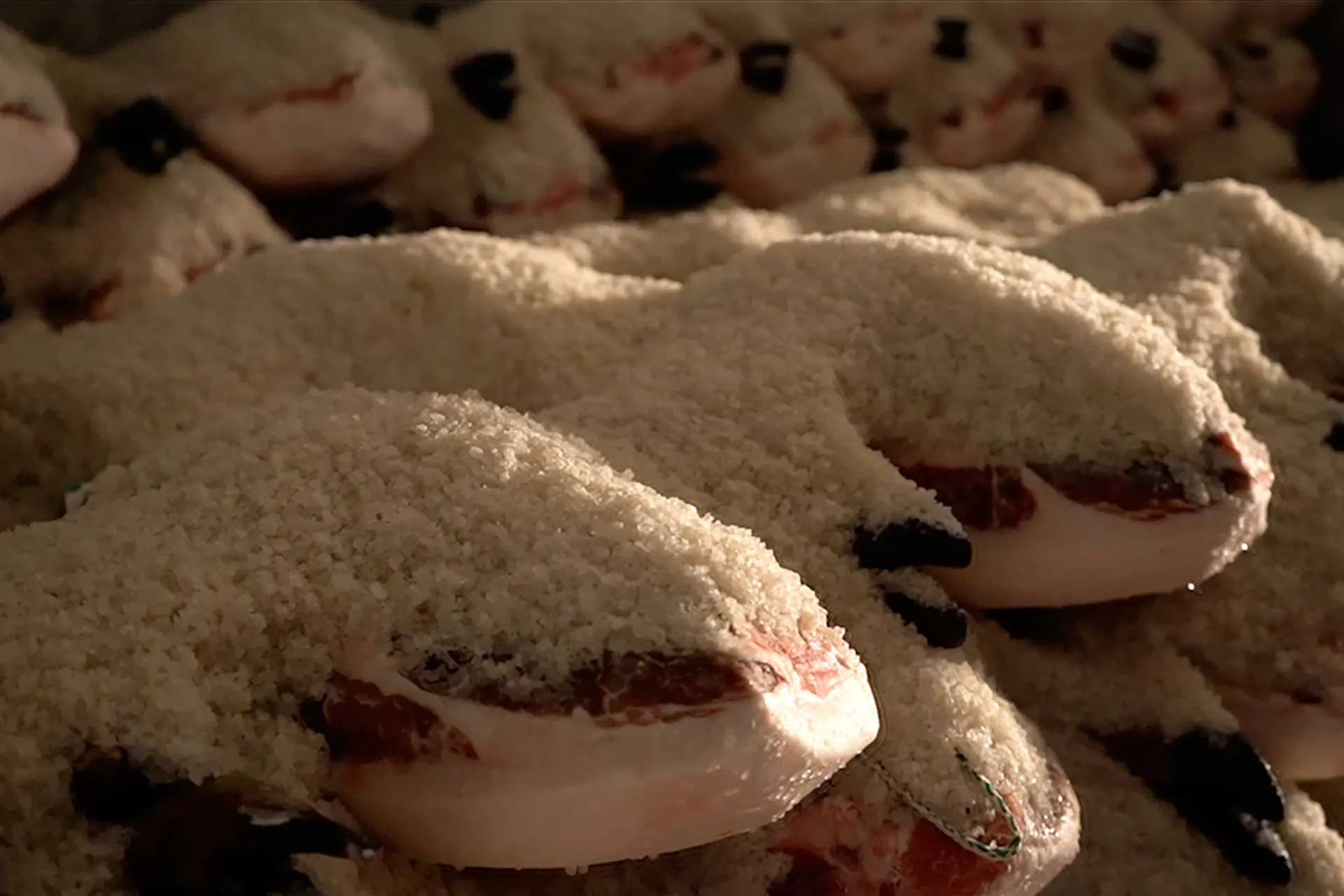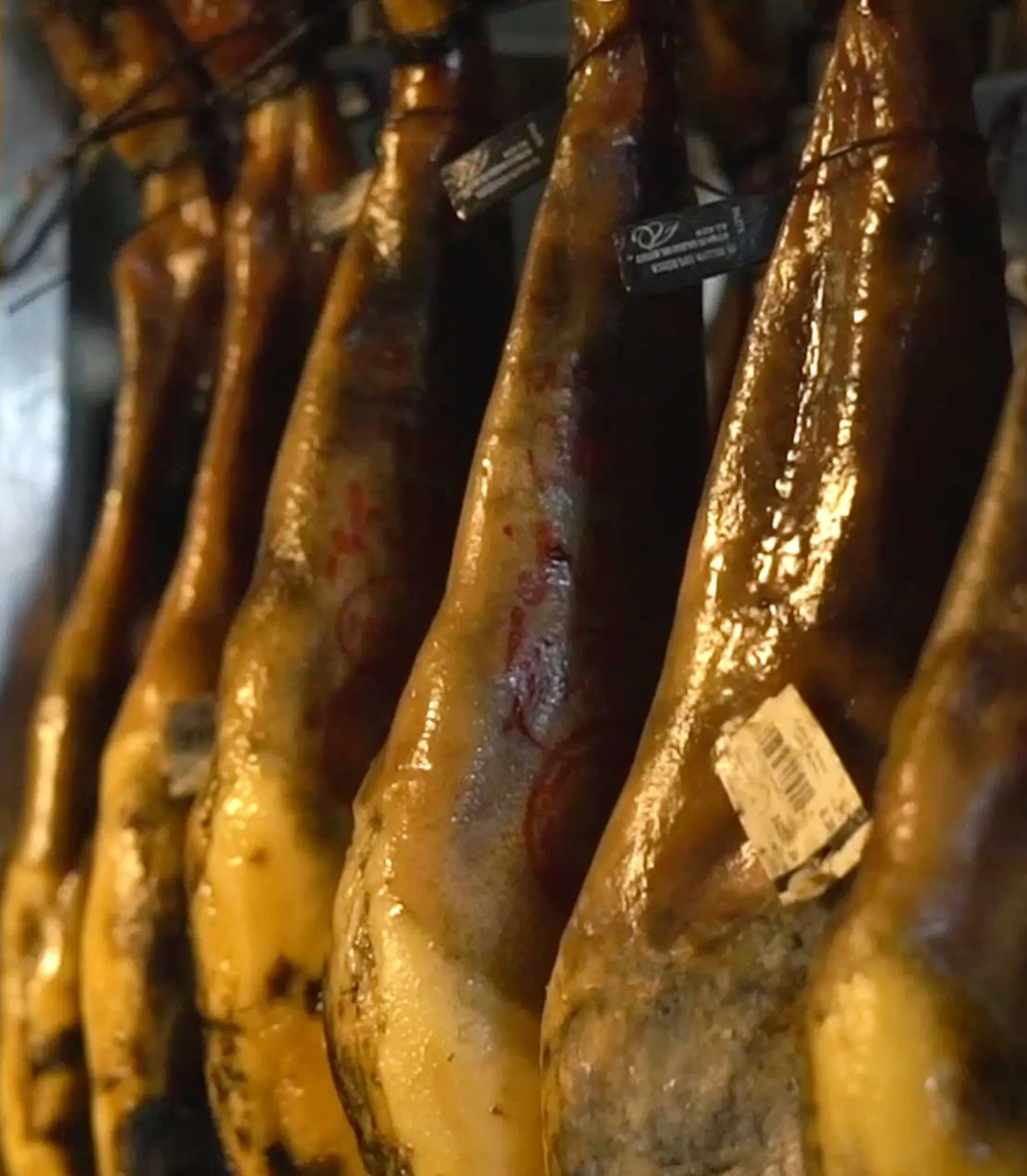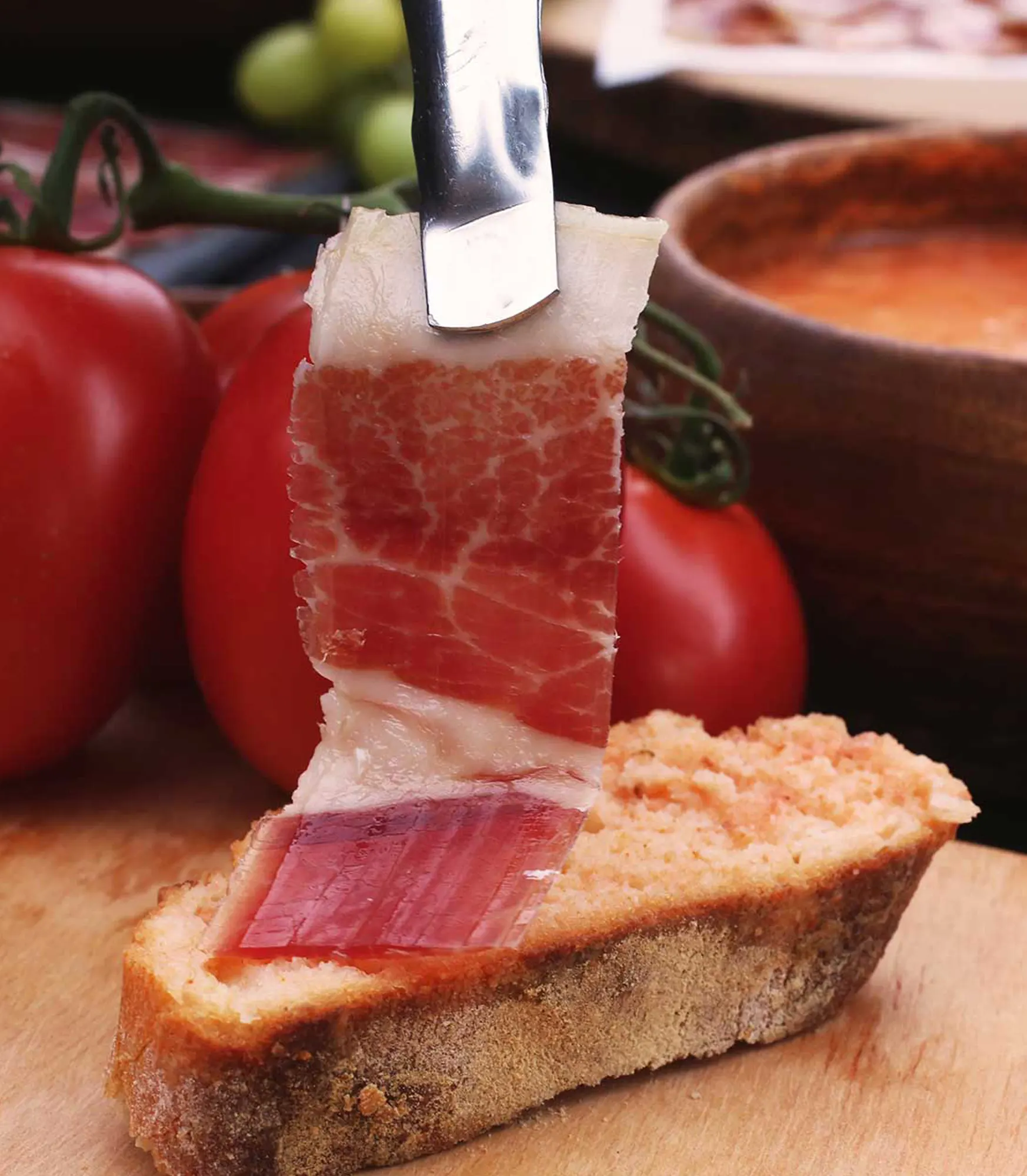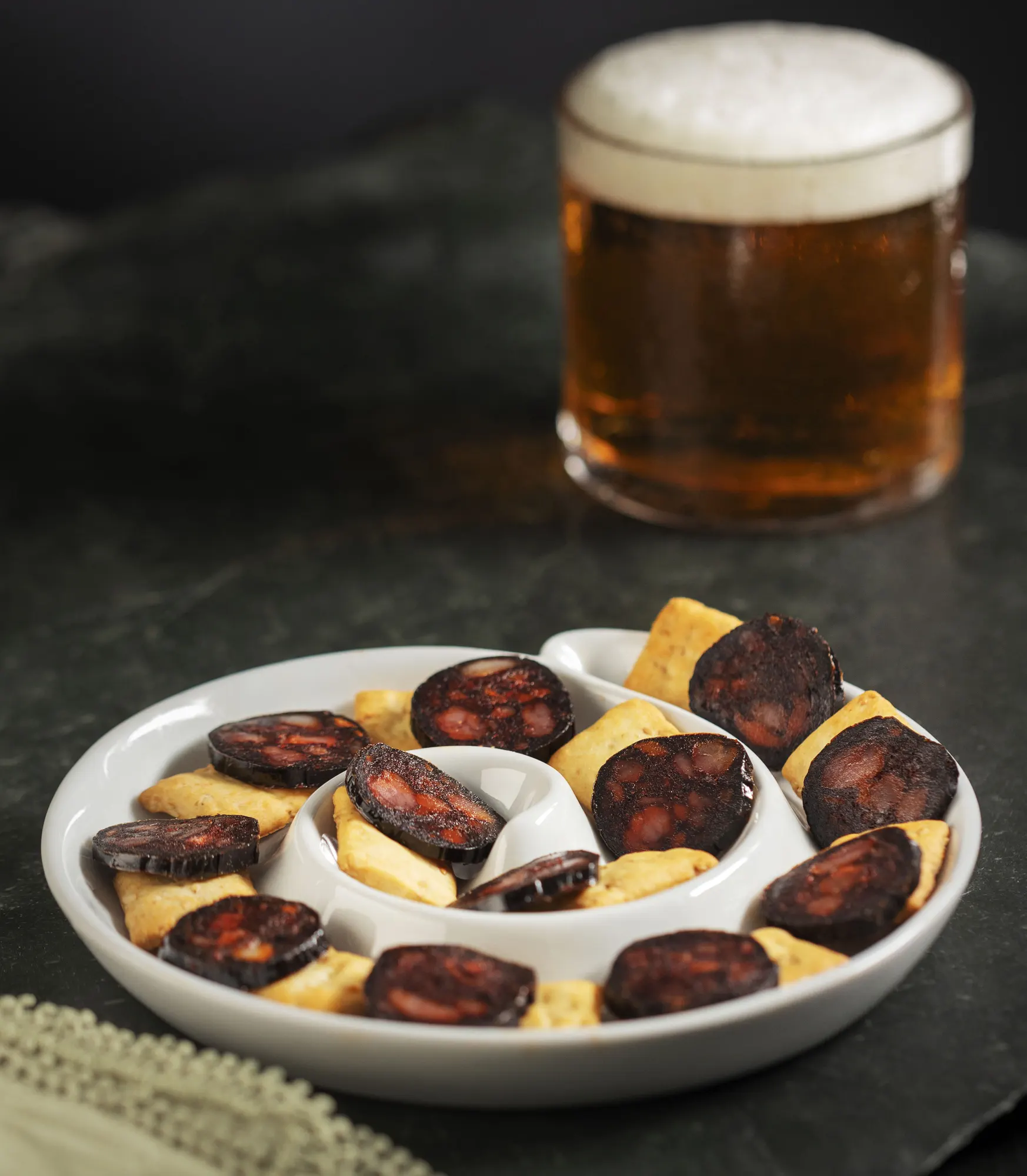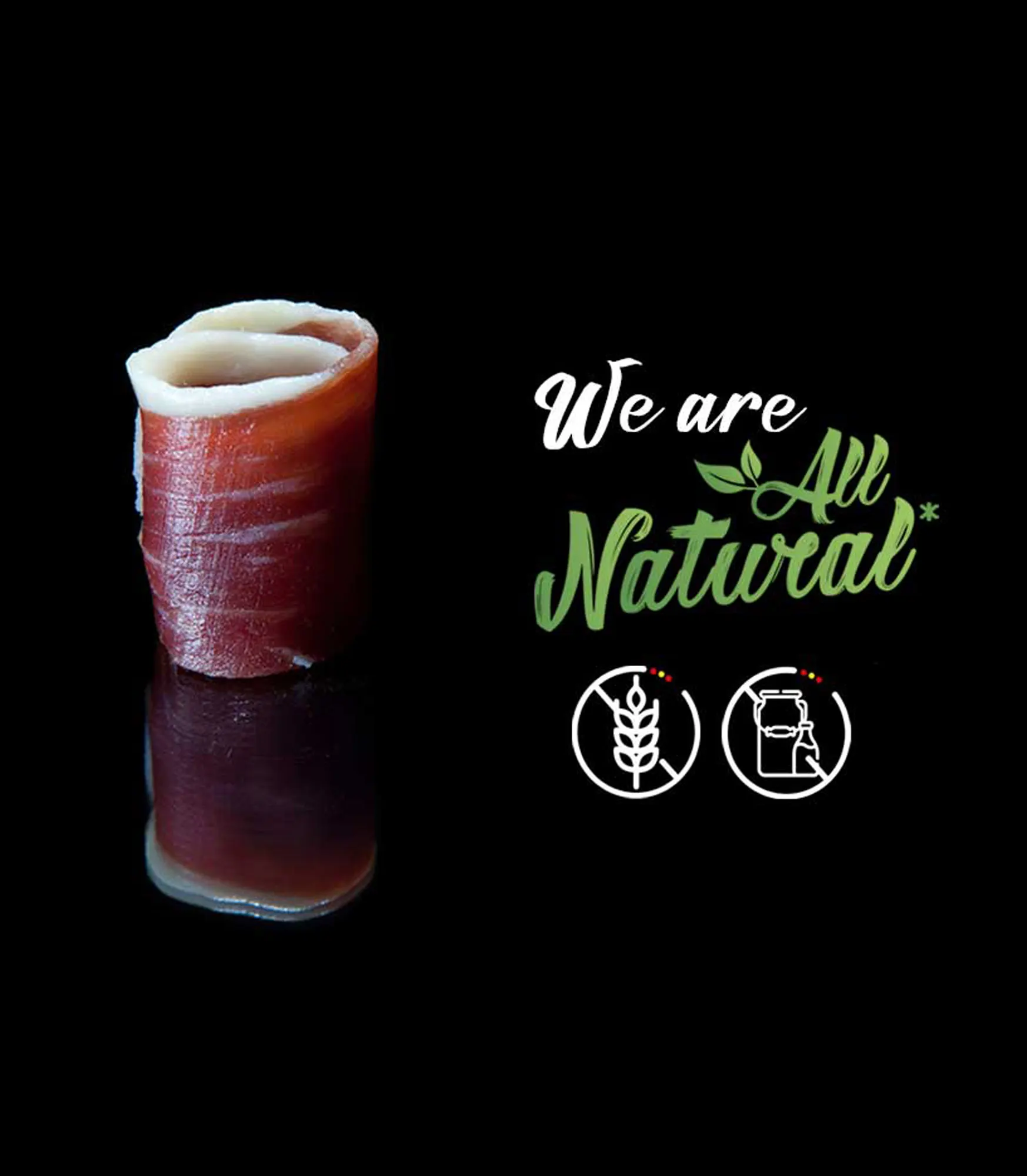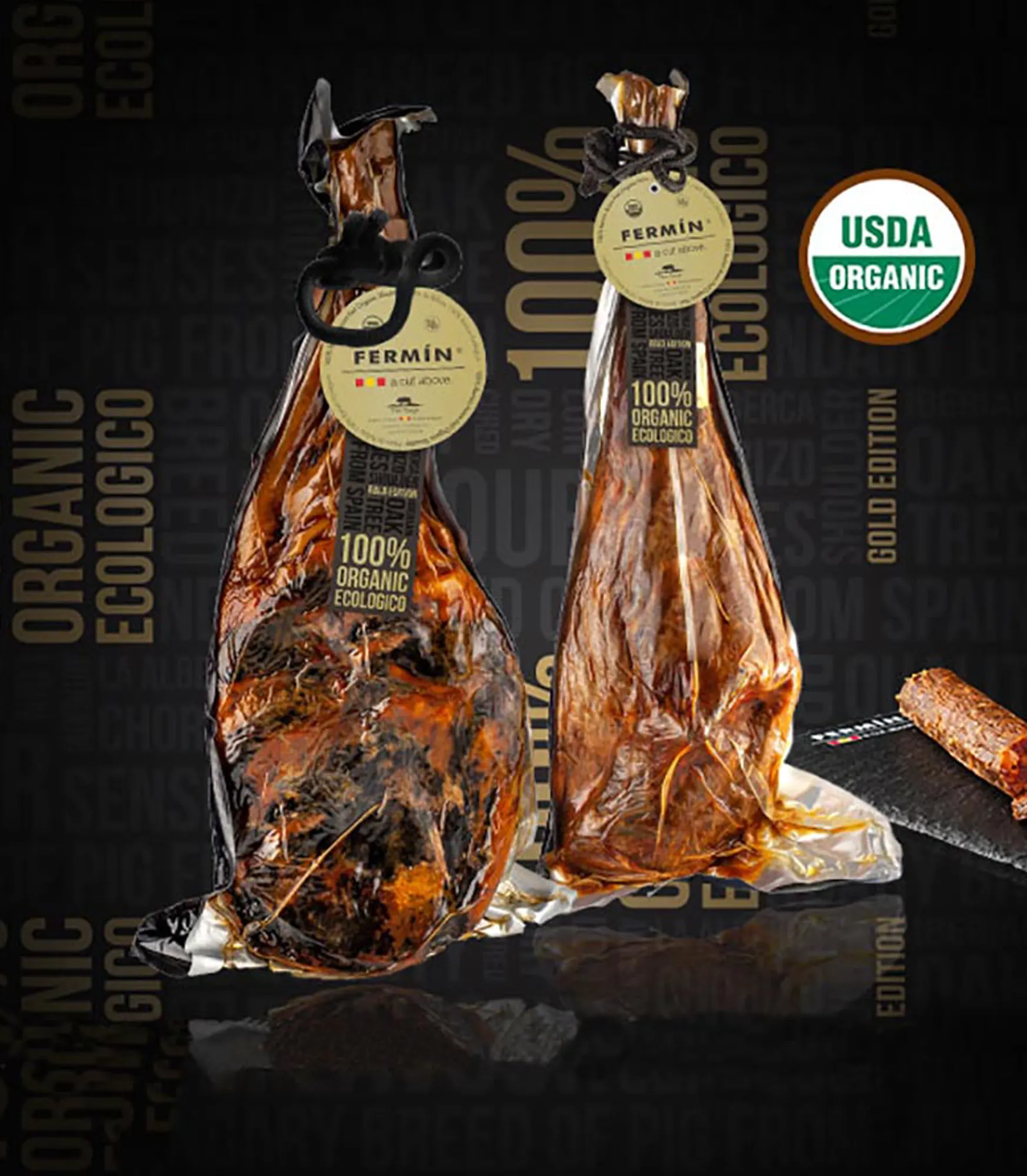THE MAGIC OF THE ARTISAN PROCESS
THE MAGIC OF THE ARTISAN PROCESS
Salting is essential in the process of making ham. It is the second stage of the curing process. First, we shave each piece to remove excess of fat and give the ham its characteristic V-shape. This process, known as profiling, will allow the salt to penetrate better.
Salting is an artisanal and very delicate process. It requires an exhaustive control of the time that each piece is in contact with the salt. This time depends on the weight of the piece, the disposition of the pieces to absorb the salt and the genetics of the animal.
There are several techniques for this: by rubbing with coarse salt, with machines, in big containers or using traditional methods, as we have done at Fermín for more than 60 years. Manual salting consists of placing the hams according to their weight, one on top of the other, and covering each piece with evenly distributed sea salt, making sure that the entire piece is completely covered.
Halfway through this process, the hams that are at the bottom are manually placed on top, and vice versa, so that they all come into contact with the same amount of salt. The salt gradually infiltrates the interior of the meat, favoring natural dehydration and thus beginning the healing process. The objective of salting is that it is the meat itself that absorbs the salt it needs. The temperature, humidity and ventilation are controlled to prevent the development of microorganisms. The time they remain salted varies according to the size of the piece and the genetics of the animal. In general, we speak of approximately one day for each kilo (2.2lb) fresh. During this 15-20 day process, the hams loose 5-10% in size.
The post-salting is essential to ensure that the salting is uniform and the salt penetrates the ham evenly. In this phase, the pieces are cleaned with warm water to remove excess salt. Then each piece is inspected as it is molded, to give each piece its shape. From there, they are introduced into the post-salting chambers to balance the saline solution, where they will remain between 60 and 90 days with a controlled temperature and humidity, until the salt penetrates the muscle of the piece. The combined action of the salt and the loss of water prevent bacterial growth. For this reason, ham can be stored at room temperature (shelf stable product).
After the post-salting phase, maturation begins, but we will talk about it in another article very soon!
